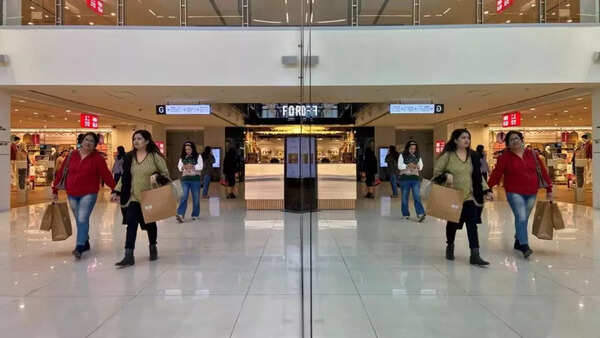Indians are spending more on non-food items than food items indicating an increase in disposable income. Source: Reuters
The data, which is based on the Household Consumption Expenditure Survey (HCES) 2022-23, also reveals some interesting trends and insights about the spending habits of Indian households. Here are some of the key findings from the survey:
The share of expenditure on food has declined, while the share of expenditure on non-food items has increased. This indicates that Indian households have more disposable income and are spending more on discretionary items, such as clothing, footwear, transport, education, health, and entertainment. The share of expenditure on food in rural India has fallen from 52.9% in 2011-12 to 46.38% in 2022-23, while the share of expenditure on food in urban India has fallen from 42.62% in 2011-12 to 39.17% in 2022-23.
Within food items, the expenditure on cereals has decreased, while the expenditure on high-value items, such as eggs, fish, meat, fruits, and vegetables, has increased. This suggests that Indian households are consuming more nutritious and diverse diets, which may have positive implications for their health and well-being. The expenditure on cereals in rural India has fallen from 11.6% in 2011-12 to 4.91% in 2022-23, while the expenditure on cereals in urban India has fallen from 7.02% in 2011-12 to 3.64% in 2022-23. The expenditure on eggs, fish, and meat in rural India has risen from 6.18% in 2011-12 to 9.01% in 2022-23, while the expenditure on eggs, fish, and meat in urban India has risen from 8.91% in 2011-12 to 10.54% in 2022-23.

The data also reveals that Indians are spending more on high-value items such as fruits, vegetables, meat and eggs over cereals. Source: Reuters
The expenditure on non-food items has increased across all categories, with the highest increase in the expenditure on transport and communication. This reflects the growing demand for mobility and connectivity among Indian households, which may be driven by factors such as urbanization, migration, education, and employment opportunities. The expenditure on transport and communication in rural India has risen from 6.4% in 2011-12 to 14.65% in 2022-23, while the expenditure on transport and communication in urban India has risen from 15.25% in 2011-12 to 23.69% in 2022-23.
The expenditure on education and health has also increased, indicating that Indian households are investing more in human capital and quality of life. The expenditure on education in rural India has risen from 3.71% in 2011-12 to 6.08% in 2022-23, while the expenditure on education in urban India has risen from 7.07% in 2011-12 to 8.07% in 2022-23. The expenditure on health in rural India has risen from 6.67% in 2011-12 to 8.25% in 2022-23, while the expenditure on health in urban India has risen from 5.88% in 2011-12 to 7.13% in 2022-23.
With household expenditures in India more than doubling over the past decade, the HCES 2022-23 data offers crucial insights into changing spending patterns and distribution. This information serves as a valuable resource for businesses and policymakers alike, guiding the development of products and services tailored to the needs and preferences of Indian consumers. Furthermore, the data underscores the challenges and opportunities in improving living standards and welfare, particularly in areas like food security, nutrition, healthcare, education, and social support.
India Maldives latest: Despite rising tensions, pace of Indian projects in Maldives increasing

